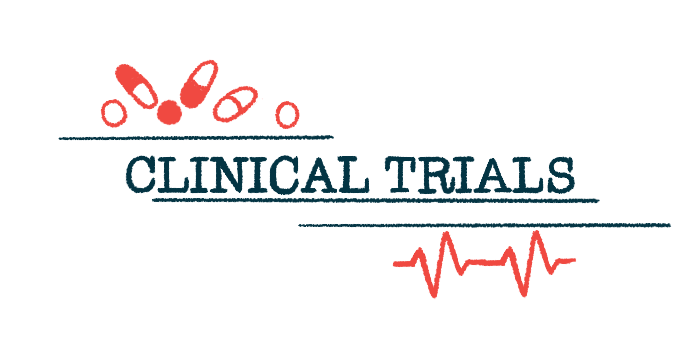Long-term Enjaymo treatment yields sustained benefits: Trial data
Studies confirm safety and efficacy, continued benefits from treatment
Written by |

Long-term treatment with Enjaymo (sutimlimab) leads to sustained reductions in red blood cell destruction, anemia, and fatigue, as well as life quality improvements, in adults with cold agglutinin disease (CAD).
That’s according to data from the extension portion (Part B) of the global Phase 3 CADENZA clinical trial (NCT03347422) involving CAD patients who did not have a recent history of blood transfusions at study enrollment.
Findings from CADENZA’s placebo-controlled portion (Part A) supported last year’s expansion of Enjaymo’s U.S. label to include all adult CAD patients, regardless of their blood transfusion history.
Results from the trial’s Part B were described in a pair of studies recently published in eClinicalMedicine and funded by Sanofi, which markets Enjaymo: “Long-term efficacy and safety of continued complement C1s inhibition with sutimlimab in cold agglutinin disease: CADENZA study Part B,” and “Sustained improvements in patient-reported outcomes after long-term sutimlimab in patients with cold agglutinin disease: results from the CADENZA study open-label extension.”
“The CADENZA Part B results support the sustained efficacy and safety of [Enjaymo] for treatment of CAD,” the researchers wrote in the first study.
Antibody aimed at complement cascade
Enjaymo is an antibody designed to prevent activation of the immune system’s complement cascade, which is implicated in the inflammatory attacks that lead to red blood cell destruction (hemolysis) in people with CAD.
This hemolysis gives rise to anemia — low levels of red blood cells or hemoglobin, the protein in these cells that transports oxygen throughout the body — and extreme fatigue, as well as other CAD symptoms. In severe cases, patients may require blood transfusions to compensate for red blood cell loss.
Enjaymo was first approved in the U.S. in 2022 for adults with CAD and a recent history of blood transfusions. The decision from regulators last year to include adults who had not received transfusions was supported by findings from CADENZA’s Part A.
In Part A, 42 adults with CAD and no recent blood transfusions were randomly assigned to receive an into-the-vein infusion of either a weight-based dose of Enjaymo or a placebo for about six months. In both groups, an infusion was given on study days 0 and 7, and then once every other week thereafter.
Results showed that Enjaymo quickly reduced hemolysis, anemia, and the need for other treatments, and also eased fatigue and improved life quality.
A total of 39 patients who completed Part A opted to move onto Part B, an open-label extension portion in which all received Enjaymo for up to a year after the last patient finished Part A. All were then followed for nine weeks without treatment (washout period).
The median duration of Enjaymo treatment was 99 weeks (nearly two years), and 118 weeks (little over two years) for those originally assigned the therapy.
Newly published data showed that for patients who remained on Enjaymo through Parts A and B, the complement suppression, hemolysis markers reduction, and anemia lessening observed by the end of Part A were generally sustained through Part B’s treatment portion.
The same was true for clinically meaningful reductions in fatigue, as assessed by the Functional Assessment of Chronic Illness Therapy (FACIT)-Fatigue score. Likewise, improvements in several measures of life quality — including physical and mental measures — and overall health, as well as reductions in symptoms of anemia, were maintained with longer treatment.
Benefits fade when treatment discontinued
Patients originally assigned a placebo quickly experienced similar benefits after switching to Enjaymo in Part B, and these were sustained until the end of the treatment period. Still, mean FACIT-Fatigue scores of the placebo-to-Enjaymo group “never fully reached the level” of patients always on Enjaymo, the researchers wrote in the first paper.
Overall, “CADENZA Part B has shown that, in addition to improving [blood-related] parameters in patients with CAD and without recent history of transfusion … treatment with [Enjaymo] results in meaningful long-term benefits to fatigue and patient-reported [quality of life],” the researchers wrote in the other paper.
During the washout period, Enjaymo’s beneficial effects began to fade, with laboratory values and clinical scores reverting toward those reported at study’s start. In agreement, the near-complete suppression of complement activity was reversed.
Of nine patients who required a blood transfusion in Part B, six (66.7%) needed them during the washout period without Enjaymo.
“Upon discontinuation of [Enjaymo], treatment effect declined highlighting the importance of continuous [Enjaymo] therapy in patients with CAD,” the researchers wrote.
“Interestingly, 60% of patients still reported “improved” [clinical status] after 9 weeks off [Enjaymo] treatment,” they noted.
The most common Enjaymo-related adverse events were headache (10.3%), skin discoloration due to low oxygen levels (cyanosis), bladder infection, fatigue, high blood pressure, injection site redness, nausea, and fever (5.1% each). Only one serious adverse event was deemed related to treatment, and was marked by high blood pressure.






